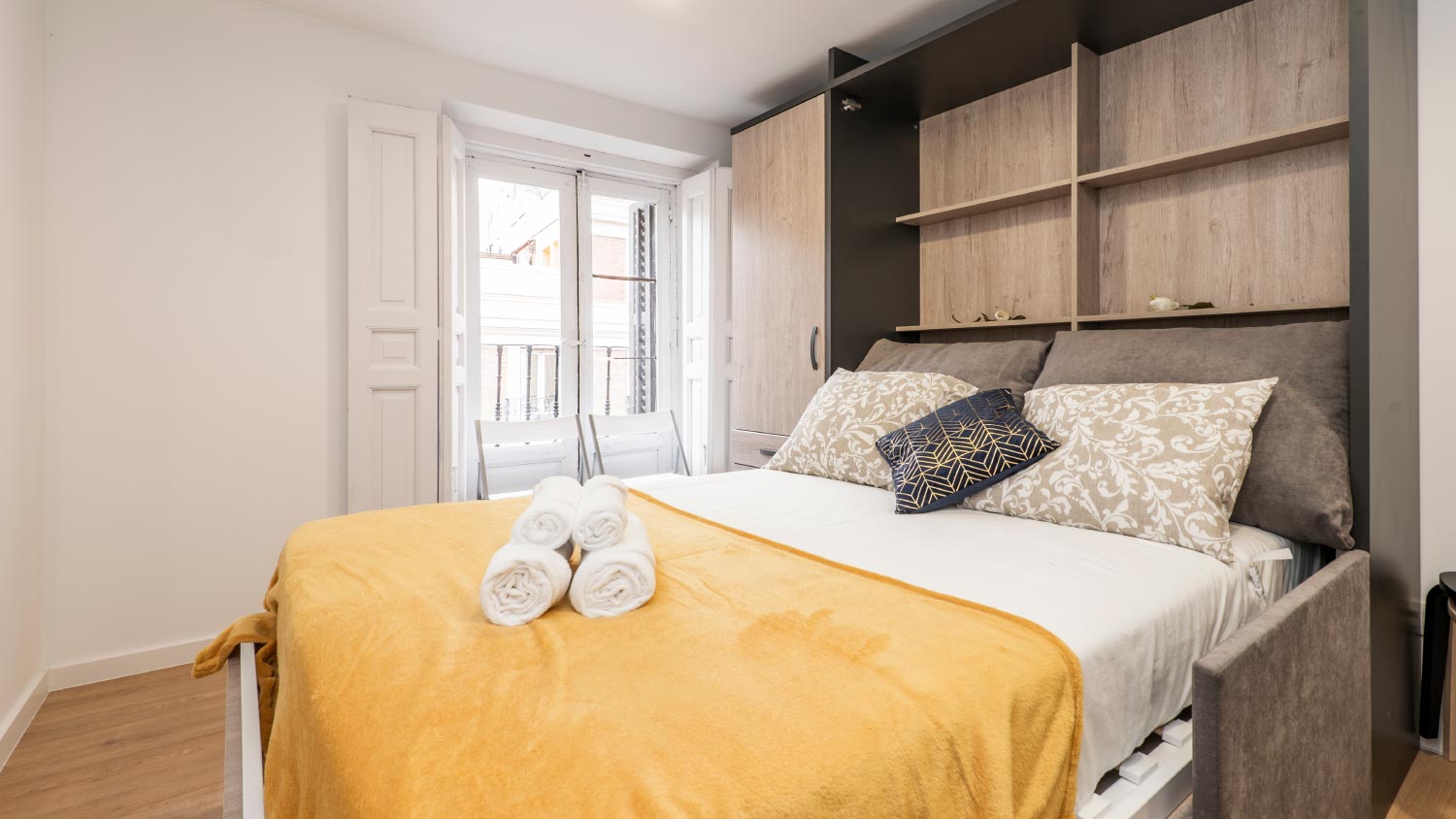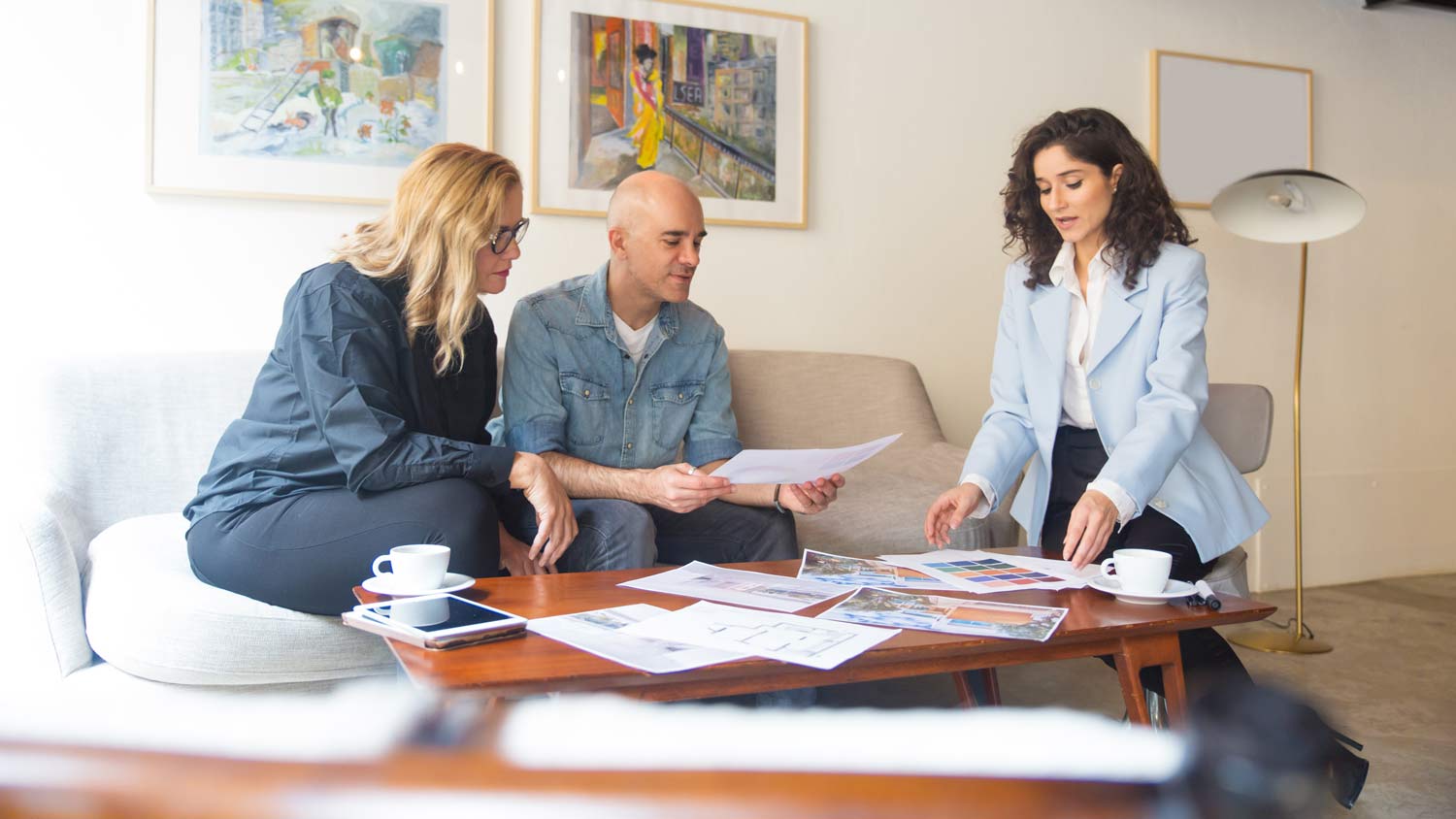Pros and Cons of Murphy Beds: Are These Space Savers Right for You?
Find out if this retro furnishing is right for your home


This space-saving favorite was invented over 100 years ago.
Murphy beds are beloved today for tiny houses and micro-lofts.
Despite the many pros of Murphy beds, this furnishing also comes with a couple drawbacks to consider.
Though a Murphy bed may seem like a better fit for a black-and-white movie than a modern home, this inventive furnishing is uniquely fitted to many contemporary needs. Also known as a pull-down, wall, or cabinet bed, this decades-old design is rising in popularity. It’s an ingenious way to win back square footage or turn any room into a multifunctional space, which is a big win for studio apartments, tiny homes, and other small living spaces.
Not familiar with this old-school favorite? Keep reading to get to know the pros and cons of Murphy beds and if it could be the missing piece for your perfect home set-up.
What Is a Murphy Bed?
When in use, a Murphy bed looks like any regular bed. But what makes this design different is that it folds up seamlessly into a wall, freeing a large amount of space during the day and making it a great idea for small bedrooms. Murphy beds are sold in an array of different sizes and styles, but most versions are hinged on one end for relatively easy opening and closing.
Murphy Bed Origins
The Murphy bed was first invented by William Lawrence Murphy in the late 1800s, according to Smithsonian Magazine, but the design was most popular throughout the 1920s. Rumor has it Murphy had the idea to create it when he realized he’d need to transform his single-room apartment into a bedless parlor fit for entertaining. Little did he know, his design would still be used to make the most of small spaces more than100 years later.
Pros of Murphy Beds

This off-the-beaten-path bed option has a lot of potential benefits. Murphy beds are great for small homes because they don’t take up any space when they’re not in use, and they’re as comfortable as a traditional bed to boot. Keep reading to learn about all the pros of Murphy beds.
They’re Space Savers
As micro-lofts and tiny homes become increasingly more common, so too do Murphy beds. “[People] are learning to get creative with the spaces they are given, and I believe Murphy beds fit well into our growing interest in minimalism,” says Andrea Martin of Ewa’s English Cottage.
Whether you live in a one-bedroom apartment and need to find a way to make it feel like you’re not constantly in your bedroom, or you do have more space and simply want to win back a bit of extra square footage for another use, a Murphy bed can certainly help you do it.
They’re Comfortable
There is practically no difference in comfort level between a traditional bed and a Murphy bed. The mattress you choose is the only thing that may have an impact on how well you sleep (but this is true for any kind of bedtime setup).
They Can Make a Room Multi-Functional
Murphy beds are so beloved for micro-lofts, studio apartments, and tiny houses because they make it possible to entirely transform a space with little effort. “A living room becomes a bedroom, a loft an entertaining space, a bedroom an office,” Martin explains.
They Provide Extra Storage
“The Murphy bed is perfect for saving space while also adding storage,” says Jessica Hamlet, of The Manor Antiques and Architecturals. “I personally love the idea of built-in shelving units for a small library that’s attached to a Murphy bed.”
Other ideas include a Murphy bed that’s also an entertainment center, a desk, or even an entire cabinet system for all your loose ends.
Cons of Murphy Beds
Despite their numerous pros, there are a few downsides to Murphy beds, as well. For starters, they can be a lot more expensive than traditional beds (and downright dangerous if not installed properly, which is why it’s a great idea to go with a pro for this project). Find out about all the potential cons below.
They’re More Expensive Than Traditional Beds
Murphy beds cost a bit more than traditional beds because they require extra steps to install. In general, you’ll pay between $1,000 and $7,500 and $3,000 on average to have one installed by a professional.
They Can Be Dangerous if Not Used Properly
Murphy beds are a safe and convenient option for any home … as long as they are installed and used properly. In general, it’s always a good idea to anchor heavy furniture to prevent tip-overs, like a heavy Murphy bed. Even avid DIYers should consider hiring a local contractor for this task to ensure your space is as safe as possible.
But there are also a handful of other steps you can take to guarantee that no mishaps occur. Whenever opening and closing the bed, take time to ensure that all locks and safeties are properly secured to avoid the risk of unwanted pop-ups. Do it in a well-lit room to guarantee you don’t miss a thing, and you and your Murphy bed will both be good to go.
They Can Be Difficult to Close Up and Put Away
Early versions of the Murphy bed were often heavy and difficult to close, and that is still sometimes true today. Fortunately, more and more options are being made with lightweight materials and advanced spring mechanisms to eliminate this problem entirely. If, of course, you’ve found a vintage Murphy bed that you can’t let go, consider putting it in a space where it won’t need to be opened every day, like a guest room.
DIY vs. Hiring a Pro
Building a Murphy bed from scratch is no easy feat, though doing so can save you a lot on overall expenses. However, it’s important that a Murphy bed be structurally sound and properly installed to avoid mistakes that could lead to serious injury for you or your loved ones. Most people should hire a local professional builder for this project unless they already have extensive carpentry experience.
Cost to Install a Murphy Bed
Building and installing a Murphy bed yourself can cost as little as $100 and up to $500 for all the tools and materials involved. On the flip side, you’ll pay anywhere from $1,000 to $7,500 for a pre-fabricated frame and the cost to hire someone to install it—well worth the money to ensure your safety.
Frequently Asked Questions
Murphy beds are no more or less comfortable than other types of beds because they can fit almost any kind of mattress. It’s possible to build a set-up with this iconic bed style that will provide comfort and please your particular sleep habits. One thing to keep in mind: The additional wear and tear of closing and opening your bed may reduce the life span of your mattress and make it more uncomfortable earlier on.
Murphy beds are unlikely to cause damage to your walls, provided they are installed properly. If you don’t have a lot of DIY experience (and even sometimes when you do), it may be better to leave such a project to a pro to ensure that neither you nor your walls end up getting harmed during or after installation.
Mattresses of all sizes and types can fit into a Murphy bed. Before buying a mattress, make sure to take measurements of your new bed frame so you don’t realize afterward that your new purchase is either too small or large. You’ll also want to double-check with the Murphy bed manufacturer to ensure your frame doesn’t have any special mattress requirements—like a specific weight maximum, for example.





- What Is a Murphy Bed? Your Sleeping Solution for Small Spaces
- 6 Multifunctional Guest Room Ideas Any Guest Would Stay In
- 16 Small Bedroom Ideas to Maximize Your Space
- 9 Under-Bed Storage Hacks to Maximize Your Sleeping Space
- How to Get Rid of Bed Bugs Without an Exterminator
- 29 Studio Apartment Ideas to Make the Most of Your Space
- The Risks and Benefits of Bed Bug Pesticides
- 10 Tips for Making Your Small Space Work for You
- Who Can I Call To Get Rid of Bed Bugs?
- 27 Creative and Beautiful Flower Bed Ideas










